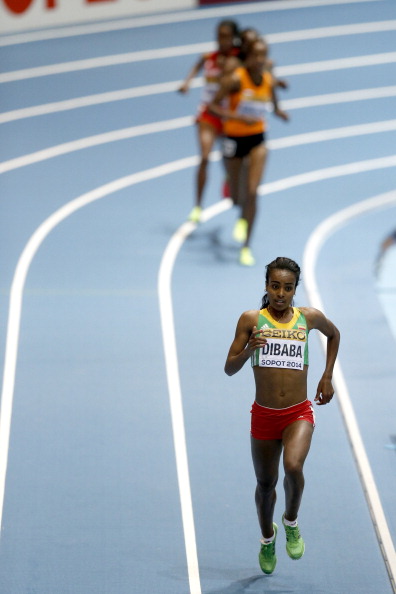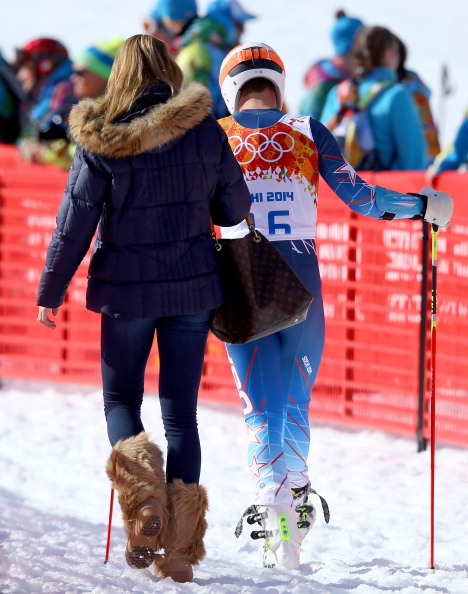SOPOT, Poland — Let’s say you dropped into Sunday’s final day of the 2014 world indoor track and field championships. Further, you were a stranger to the sport, maybe kinda-sorta checking it out, a local from here in Sopot or Gdansk.
The program started at 2:50 in the afternoon. It wrapped up a little past 7 in the evening. That’s just over four hours. In those four-plus hours you saw — deep breath now — 14 events, two semifinals and 12 finals, as well as 17 medal ceremonies.
Essentially, you went to the circus. All that was missing was lions, tigers and bears.
This has to change.
At one instant Sunday, long jumper Erica Jarder of Sweden, the 2013 European indoor bronze medalist, launched herself into the pit exactly as, at the other end of the infield, Polish pole vaulter Anna Rogowska, the 2009 world champion and 2004 Athens bronze medalist, was going up and over the bar. Bad timing for Erica Jarder. She might as well have been invisible.
Later, the gaggle of guys running the 3000 meters circled the track as, again, Rogowska jumped at 4.7 meters, or 15 feet, 5 inches, the crowd clapping for her, paying the guys little if any attention. The 39-year-old defending champ, Bernard Lagat of the United States, had been shown pre-race on the big-screen. But what about the 21-year-old sensation Caleb Ndiku of Kenya, who would go on to out-kick Lagat and, you know, win?
A few moments later still, as American Chanelle Price, Poland’s Angelika Cichocka and Marina Arzamasova of Belarus were taking their victory laps -- Price the first American woman to win an 800, indoors or out, at a senior IAAF championship -- the guy high jumpers were, one after another, doing warm-up leaps over the bar. Halfway through that 800 victory lap, the medal ceremony for Saturday’s men’s 60-meter dash broke in, the strains of “God Save the Queen” ringing out for Britain’s Richard Kilty, the photographers framing him just so with American Marvin Bracy and Qatar’s Femi Ogunode.
Everyone connected to track and field recognizes this problem. It is the deep, dark secret. A day like Sunday merely underscores the challenge, if you prefer a more connotatively neutral word.
Are the indoor worlds in particular a championships, or a gala? Like, what?
To frame it differently: why is pole vault a straight final but not high jump, which involved a qualification round?
Track and field is the the leading sport in the Olympic movement. But other sports — swimming, in particular — are gaining ground, and fast, which is why the International Olympic Committee last year elevated swimming and gymnastics into the top tier of Olympic revenue-sharers; the IAAF used to be alone in that top tier.
One of the main reasons: those other sports have made major changes in their presentations to the viewing public.
By contrast, track and field has pretty much stayed the same. A track meet in 2014 is essentially like going to a track meet in 1994 or 1974.
This has to change.
Of course, the essence, the beauty, of track and field is that it has an amazing tradition, including records from way back that you can compare to today’s athletes. (Let’s put aside, for just a moment, doping controversies and certain 1980s seemingly never-to-be-matched records.)
Track still has the capacity to produce amazing athletes from the world’s four corners. Genzebe Dibaba of Ethiopia is a marvel. The world record-holder in the event, she won the women’s 3000 Sunday, dropping everyone else like they were irrelevant, winning in 8:55.04. The Kenyan champion, Hellen Onsando Obiri, was more than two seconds back, in 8:57.72.
How best to spotlight a race like the 3k with a talent like Dibaba in it? While the women’s pole vault and men’s high jump are going on simultaneously?
The very last event on the program, the men’s 4x400 relay, produced a new world indoor record, 3:02.13, set by Americans Kyle Clemons, David Verburg, Kind Butler III, Calvin Smith Jr.; there was so much going on that any announcement was lost in the general din.
The IAAF on Sunday thoughtfully provided a stapled results package from both Friday and Saturday to the members of the press. Friday’s ran to 41 pages. Saturday’s, 42.
On the one hand, this was glorious for stat freaks.
On the other, this highlighted the magnitude of what’s at stake.
Why so many events? So much stuff?
Every sport has to evolve, and track is way, way too slow to get with the program.
Now — right now — is the time to do so.
These figure to be the last years of Usain Bolt’s reign. Since 2008, he has been — pretty much by himself — the face of track and field everywhere in the world.
Bolt doesn’t do the indoors. That right there — despite the fact that Sopot 2014 was, legitimately, the most important international meet of the year, because there are no world outdoor championships — tells you things need to be looked at closely.
Bolt isn’t even here for ceremonial purposes. Why not?
These are also the final years, presumably, of Lamine Diack’s years as IAAF president.
Now is the time to lay the groundwork for the big changes that have to happen, beginning with the next Olympic cycle in 2016 — and, better yet, before, with the 2015 worlds in Beijing and the 2016 indoors in Portland.
The IAAF, to its credit, recognizes it has issues. That’s why it is launching the world relays, the first edition in Nassau, Bahamas, in May.
Giving some more credit — the IAAF mobile-phone app is the best on the Olympic scene. Flat-out.
But more, much more, needs to be done.
If you go now to a major swim meet, you see the way it can be done.
In theory, a swim meet should be the most boring thing imaginable. What could be more dull than watching eight or nine people swim laps with their heads at or under the water?
Instead, USA Swimming in particular, and FINA, the international federation, have made swim meets electric. At the U.S. Trials, there are fireworks. Indoors. As a matter of course, the athletes now come out from behind curtains to be introduced individually, with spotlights and to the beat of rock music. It generates a sense of competition and drama.
There’s nothing like that at a major track meet. The internal TV camera feed goes down the line as racers stand in front of the blocks. But only Bolt has understood over the years how to really play to the camera — that is, to play to the crowd. And because there are way too many competitors there’s no time for individualized music.
It’s not just the indoors meets at which there’s too much happening. At last summer’s world championships in Moscow, or on an average night at an Olympic Games, there typically are seven or eight events going on over two-and-a-half or three hours, sometimes longer.
On Day 6 of the Moscow 2013 worlds, for instance, one of the great men’s high jump competitions in history had to compete for attention with the heats of the men’s 4x400 relay; the women’s triple jump final; the women’s 200-meter semifinal; and, then, in succession, finals in the women’s steeplechase, women’s and men’s 400-meter hurdles and, finally, the women’s 1500 meters.
Absolutely, some leading voices within track and field recognize the issues — among them Sergey Bubka of Ukraine and Seb Coe of Great Britain — and are mindful of the need for change.
Bubka’s mid-winter pole vault-only meet in Donetsk, Ukraine, for instance, with its rock-and-roll back beat, offers an intriguing model. What if, for instance, a particular world championships session was one discipline only?
Or: what if the qualifications were set beforehand and, say, a particular discipline at a world championships was limited to eight or 12 competitors? Couldn’t the current Diamond League system, if it were tweaked, offer a way to make that happen?
Most critically: how do you get geeked-up teenagers and 20-somethings to want to come to track meets all stoked out like at slopestyle and snowboard events? No -- seriously.
The International Olympic Committee is taking 2014 to undertake studies leading to potentially wide-ranging reform; an all-members assembly has been called for Monaco in December.
What if the IAAF undertook a similar process?
All reasonable ideas ought to be on the table.
Now.











